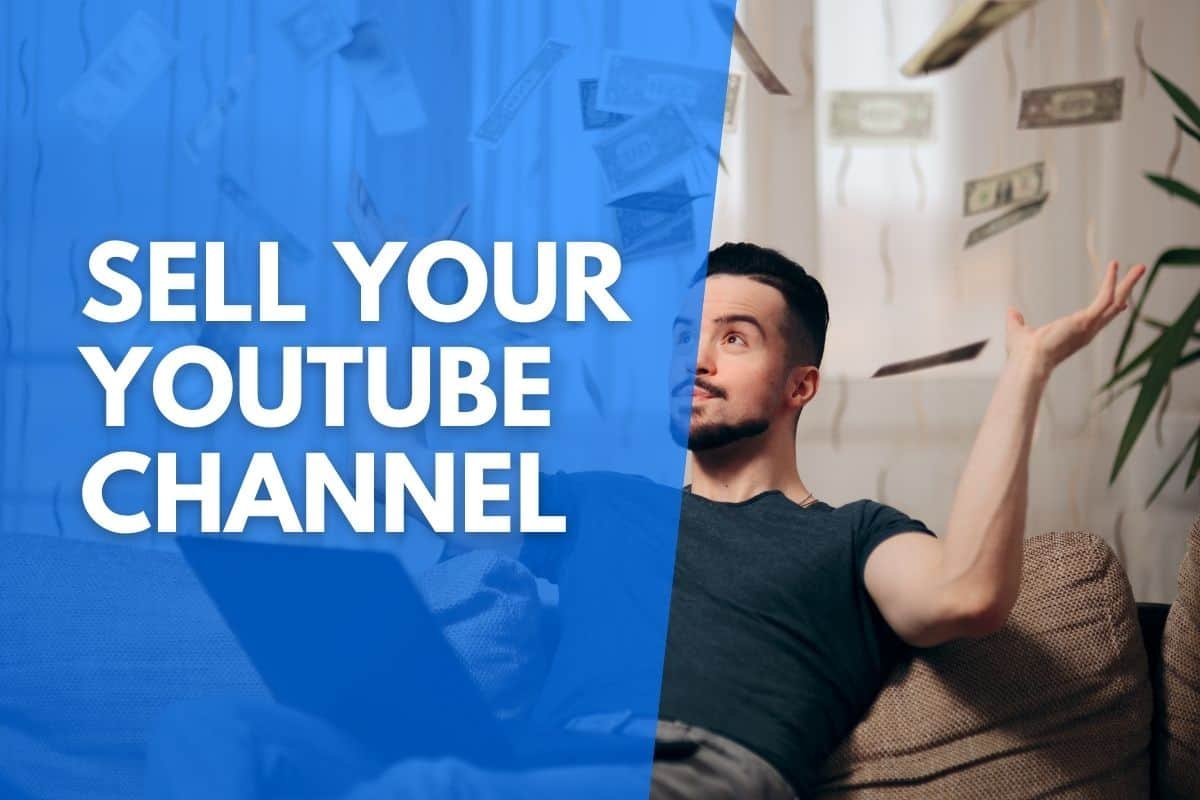In this article, we’re going to look at how much you can sell your Channel for and the actual process of how to sell your YouTube channel.
Like almost all digital assets, you can sell your YouTube channel and maybe even make a very tidy profit from the sale.
Whatever your reasons for selling, there are a lot of questions that you may have. In this post, I’m going to cover the most important things to consider when selling your YouTube channel, as well as how to go about doing it the right way.
Let’s start off with probably the main thing you want to know: How much your YouTube channel could be worth.

- How much can you sell your YouTube channel for?
- How to find out what your YouTube channel is worth
- How to sell your YouTube channel
- 1. Get your YouTube channel in order
- 2. Prepare data with proof of income
- 3. Try and sell when growth is on the rise
- 4. List your channel on a trusted marketplace or find a private buyer
- 5. Finalise and agree on a legal purchase agreement
- 6. Use Escrow for secure payment
- 7. Transfer your YouTube channel to the new owners
- How to find a buyer for your YouTube channel
- How to change ownership of your YouTube channel
- Should you sell your YouTube channel?
- Final thoughts on selling a YouTube channel
How much can you sell your YouTube channel for?
You can generally sell your YouTube channel for 36 times the channel’s monthly revenue. So, if your channel makes $500 per month, then a reasonable price for your YouTube channel would be $18,000.
If you’re only making $100 per month, you can ask for $3,600 for your channel.
These figures can go up and down though, depending on a number of factors such as how they are monetized, channel engagement, audience attachment, type of content, and more. But we will look more into that in a minute.
It is, however, possible to see channels sold for even 50 times their monthly revenue.
Some large YouTube channels are selling for millions, like the children’s kids’ songs channel “Little Baby Bum,” which sold for reportedly between $7.75 million and $11 million.
Since 2018 the sale of YouTube channels has been on the rise with YouTube MCNs actively acquiring established channels.
In addition to the revenue streams brought in by buying a channel, these MCNs can use the possible collaboration to incentivize YouTubers to join their network.
It’s not only MCN’s purchasing YouTube channels, though.
Media companies are also looking for good channels to expand their portfolios. Individuals are looking for channels that have already gotten the ball rolling so that they don’t have to start from zero.
Oh, and in case you’re wondering if it’s even legal or goes against YouTube’s Terms of Service, yes you can sell your YouTube channel without any of these issues.
How to find out what your YouTube channel is worth
In order to make an accurate valuation on your YouTube channel, these are the 7 factors that need to be considered.
1. Monthly Revenue
Possibly the most important factor in working out your channel’s worth is your monthly revenue. This is done by calculating how much money your YouTube channel has generated on a monthly basis over the last 3 months and the last 12 months.
The monthly average can then be worked out for the 12-month period and the 3-month period. And these averages can then be multiplied by a 36x multiple, giving you a range that you can expect to sell your channel for.
Say for example you received on average $300 per month over the 12-month period, but you earned $500 on average in the last 3 months, this would give you a valuation of between $10,800 and $18,000 for your YouTube channel.
2. Channel growth
Why we look at both the 12 months and the 3-month average is to make a fair judgment based on the growth of the channel. It may have generated far more a few months ago and has now shown a decline, but it still has potential, so earlier momentum should still be taken into account.
Depending on what happened to cause the drop-off, you could see a valuation made on the more recent 3 month period. If it was seasonality, like a winter sport-based channel, then you can make a valuation on the longer time period as the drop is something that is to be expected.
Once you start seeing things that are unexpected with your channel growth, it’s generally good to use the shorter valuation period. This can also be good for you if you’re selling your channel and it is only starting to gain momentum in the last 3 months.
YouTube growth is often exponential, so you can go from $100/month to $1000/month in a matter of weeks and your YouTube channel valuation should also reflect that.
3. How is the channel monetized
Channel monetization can play another big part in how much you can ask for your channel. If the majority of your monetization is done through services you deliver and market on your channel, you will most likely not be able to use this figure in your calculations as the company will probably not have you joining the team and have you continue offering those services for the next couple of years.
The same can be said for donation-based monetization methods, like Patreon. Depending on what the Patreon offer is, the new owner may not be able to fulfill it, and the Patrons may be interested in supporting YOU, not your channel.
Another monetization method you should be wary of is brand deals, unless you find a buyer that is interested in maintaining brand relationships, they may not be as interested in this and could send you an offer with that portion of the revenue excluded from their calculations.
Some fairly safe methods of monetization are through YouTube Ads, affiliate marketing, and digital products like merchandise. These are fairly “passive” as the new buyer won’t have to do much onboarding apart from changing some links and registrations.
4. Age of the channel
The age of your YouTube channel can also play a role in the valuation. If you have an aged channel that has solid and consistent revenue, that can reflect well on your channel valuation. If you have a few videos that seasonally generate a certain number of views consistently, it can help you achieve even higher multiples than 36x your monthly revenue.
Age has a factor because buyers tend to be more interested in consistency or growth when they’re acquiring a channel and newer channels tend to have less of a track record to look back on.
P.s. I mention revenue as the number to multiply rather than profit. This is because things like upgrading your video editing pc, getting a higher quality camera, hiring a video editor, video talent, etc. are all large investments that have already been made and now that the content has been made, can generate an income with no attached expenses.
You’re selling a digital asset, and as YouTube is a free platform, you should not have any maintenance costs. And if you are using a paid tool, like TubeBuddy for example, the buyer can choose whether or not they want to continue using it.
So, remember to use your monthly revenue and not your monthly profit when making these calculations.
5. Engagement, niche, and audience
Your channel engagement, the specific niche you’re in, and your audience can all impact your channel valuation. Generally speaking these factors all impact how much money you are making on your channel already, but if you aren’t monetizing your channel as well as it could be, these can still help increase your valuation above the 36x multiple.
Your channel engagement can help buyers estimate your channel trajectory, which can help you get a good (or bad) valuation. This doesn’t mean that you are basing this valuation on future earnings, but you can get a slightly higher multiple for the groundwork you’ve already laid.
The niche, or topic, of your channel, can also play a big part in the valuation. If you’re in a niche that has high-income potential, and high RPMs for your ads, then you could get a higher valuation. The opposite can be said if you’re in a saturated niche with low RPM, your channel could be valued below the 36x monthly multiple.
An example of a high-income niche would be real estate, golfing, and generally product-focused niches. Some low-income niches would be things like music covers, gaming, and general lifestyle/vlog content.
In addition to your engagement and your niche, your channel audience can also play a large part in your channel valuation.
If the majority of your audience demographics are US, UK, Canada, Australia, Germany, France, etc. based countries, you could increase your valuation slightly. These are countries that tend to have a population with higher amounts of disposable income than the norm.
And the opposite can be said for many countries in Asia, South America, and Africa. Here the disposable income is lower and a buyer generally wouldn’t be able to get as much value as they would for an equally sized channel with a US following.
It’s similar for age as well, people in their mid-30s tend to have more disposable income than 18-year-olds. But you can see how much your niche and audience demographics could affect your valuation by looking at your channel RPM.
Have a look at this guide that goes over how much YouTubers of various sizes and in various niches earn to get a better idea of whether your RPM is high or low.
6. Type of content
The type of content on your channel can impact your valuation as it can provide the consistency that interests most people interested in investing in a YouTube channel or website.
Evergreen content is some of the best, this is content that continues to gain views over time and on a consistent basis. This is about as secure of a recurring income as it comes on YouTube.
Often evergreen content is educational in nature, “how to do XYZ” for example, and this content doesn’t have an expiry date (unlike a product that may become irrelevant once a new model is released, or following online trends) meaning it can bring in views from search results and recommendations for months and years to come.
Another type of content that is good but in a different kind of way is news content. If you can consistently show your channel as the place to go for the latest news within your niche. That has some added value that can help increase your valuation.
The videos may have a shorter lifespan, but they can generate high enough numbers of views to warrant the effort. From a potential buyer’s perspective, these videos can also generate press and links from reputable sources, which, if they have a website, can be funneled into links to their website to increase the SERP rankings of their money pages.
Some content that can cause a lower valuation would be things like only trend following, general lifestyle content, news that’s difficult to connect to a product or monetize, etc.
7. Is there a face associated with the channel?
This last factor is one of the most important. If your channel is focused around you, then it can be quite difficult to sell your channel for a high multiple without proving that the audience will stick around when you’re gone.
If your viewers subscribed mainly for you, then they probably won’t be interested in your channel once you leave. Let’s use PewDiePie as an example, if he sells his channel and some random person starts making the videos he usually makes, the viewership will bomb as the new person hasn’t built up a relationship with the audience like PewDiePie has, they may have a different sense of humor and personality.
Buyers should take this into account when looking to purchase a YouTube channel and so should sellers. If you have a face associated with your channel, test the engagement by introducing new people and having other people host the channel. You could even continue on for a fixed number of videos in the agreement, or work with the new owners on camera for a few weeks/months.
If you can show that the channel will do just fine when you’re gone, you’ll be a lot more likely to sell your YouTube channel for a higher value.

Now that you know how much your channel is worth, let’s look at how to sell your YouTube channel.
How to sell your YouTube channel
In order to get the best return and ensure a smooth transaction when selling your channel, there are a few things you need to do.
This is what you need to do and how to sell your YouTube channel:
1. Get your YouTube channel in order
The first thing you should do before selling your YouTube channel is to do some spring cleaning and make it look appealing to buyers. In real estate, you’d call this working on the “curb appeal”.
Here you should remove old videos that are irrelevant to the channel and aren’t getting any views (you should do this even if you aren’t looking to sell!).
Look at your channel homepage and customize it so that it makes sense for your niche, this can include updating your channel banner, and maybe even your thumbnails. (Again though, this should be something you should do regardless of whether you are selling your channel or not.)
Another thing for you to do is clean up a bit of the back end, so remove any videos that you don’t need, and shouldn’t be a part of the sale. These could be unlisted videos that are embedded on sites that are not a part of the sale, private videos that you no longer need, etc.
Also, make sure your comments are all cleaned up and answered, and if you have any false copyright claims against you, sort those out before you list your YouTube channel up for sale.
2. Prepare data with proof of income
This is something you should do on a monthly basis, tracking your income and expenses.
When you’re preparing to sell your YouTube channel, have all of the relevant data compiled in a spreadsheet. Preferably on a monthly basis, with the different streams of income on different rows and likewise for expenditure.
What you should also do is take some screenshots to accompany your data, so if you earned anything from Amazon’s affiliate program, take some screenshots for the month. And likewise for your YouTube ad revenue, and any other methods you may have used to earn an income from your channel.
3. Try and sell when growth is on the rise
It can be very tempting to wait until your channel is on the decline before selling it as you don’t know how high your channel may go. But if you wait for your channel to start declining, buyers will be able to see that as well and you can get less money when you sell.
If you’ve become disinterested in your channel or want to move on to newer projects, then I recommend selling when it’s on the rise. Buyers will be more interested and if it does dip afterward, you’ve gotten out at the best time.
If you have a channel that’s in decline, I recommend looking at the videos that are trending on your channel, or in your niche (using VidIQ), and then creating a few similar videos and giving it a few weeks to see if you can stabilize it or get the channel to start trajecting upwards again.
This little effort can help you maximize the amount you receive when leaving the channel as the buyer can see that your channel isn’t on its deathbed.
4. List your channel on a trusted marketplace or find a private buyer
Now that your YouTube channel is in order and ready to sell, you can find a marketplace like trustiu.com to list it on.
Or if you know of any private buyers, you can approach them with your offer directly.
This shouldn’t be an elaborate process as you already sorted out all of your documentation in step 2.
5. Finalise and agree on a legal purchase agreement
Once you’ve found a buyer, it’s time to finalize the agreement and get legal paperwork sorted out.
If you’re using a marketplace, they could manage all of this for you, but if you’re doing it privately, it is probably best for you to consult a lawyer for a purchase agreement.
When finalizing everything, make sure that you aren’t locking yourself into anything that you’re not going to be able to deliver.
This could be things like continuing to produce videos for the channel for a certain period or a number of videos. What the scope is of that video production (i.e. are you responsible for everything from research and filming, to editing and uploading, or are you just the face and they supply a script/content).
Also make sure you know what assets are being sold, such as any additional social media profiles, websites, or even raw video footage for the existing videos.
6. Use Escrow for secure payment
When making a large digital sale, like selling a YouTube channel, I recommend that you use Escrow (or a marketplace with Escrow) for a secure payment procedure.
They basically act as a middle man, and you only transfer the assets to the new owner once they have transferred the money into the Escrow account. Once it’s confirmed to be received, you can then transfer the agreed-upon assets to the new owner.
Escrow does charge a small fee, but it’s tiny compared to most other payment processors, and well worth it for the safety aspect. If you’re using a marketplace, they often charge between 5-20% of the sale amount, but the Escrow fee (or equivalent service offered by the marketplace) is included in this.
7. Transfer your YouTube channel to the new owners
Now that you’ve received the message that the money has been received, it’s time for you to transfer the YouTube channel (and any other agreed assets) over to the new owners.
Once they’ve confirmed that they have received everything, the money will be released into your bank account.
P.s. Some marketplaces may take care of most of this for you.
You may need to still help the new owners in the next couple of weeks, depending on who it is that’s purchasing. This is just something that can be good to know, also when looking for buyers, if you don’t have much time to assist after the sale, more YouTube savvy buyers/companies may be more ideal for you as the seller.
How to find a buyer for your YouTube channel
When it comes to finding a buyer for your YouTube channel, the best one is often someone you know and trust. This makes the transfer of ownership all the easier. But what do you do if you don’t know of any buyers?
Here are 3 ways for you to find a buyer for your YouTube channel.

1. Use a YouTube Channel marketplace
Websites like Trustiu.com, fameswap.com, or accs-market.com are all marketplaces where you can buy and sell YouTube channels. You’ll find a variety of different channels on all of these marketplaces, so if you’re unsure of where to list your channel, check them out.
2. Create an associated website and list it on a website marketplace
As website marketplaces have been around for a lot longer than YouTube channel marketplaces, they can be seen as more trustworthy. Sites like Flippa, Empire Flippers, etc. are all great places to try and list your site for sale.
Register for some low-priced hosting set up a basic website, and then you can sell your channel as an added asset on one of these website marketplaces.
Just make sure to be clear that the YouTube channel is the main asset in your descriptions and the website can be built out if the new owner feels like it.
I recommend building out a website for your YouTube channel even if you’re not planning on selling it. This gives you something you control if something happens to your channel and you can get additional traffic from your website and use it as another source of income.
[affiliatable id=’93045′]
3. Look for Facebook Groups where digital assets can be listed
Facebook groups can be a great place to find interested buyers, bargains, and also a lot of scammers, so make sure to use caution.
If you do go looking for a buyer in Facebook groups, then you should look for groups where digital assets, like websites, are allowed to be listed. Often you’ll be able to offer your YouTube channel here as well and you may be able to find an interested buyer.
When using Facebook groups, pay attention to all of the rules, many of these groups will ban you immediately if you post things that are not allowed, so check that, and again, use caution.
How to change ownership of your YouTube channel
In order to change ownership of your YouTube channel, you first need to make sure you have a brand account. You can check if your channel is a brand account here. If it is, it should show up at the bottom as seen below.
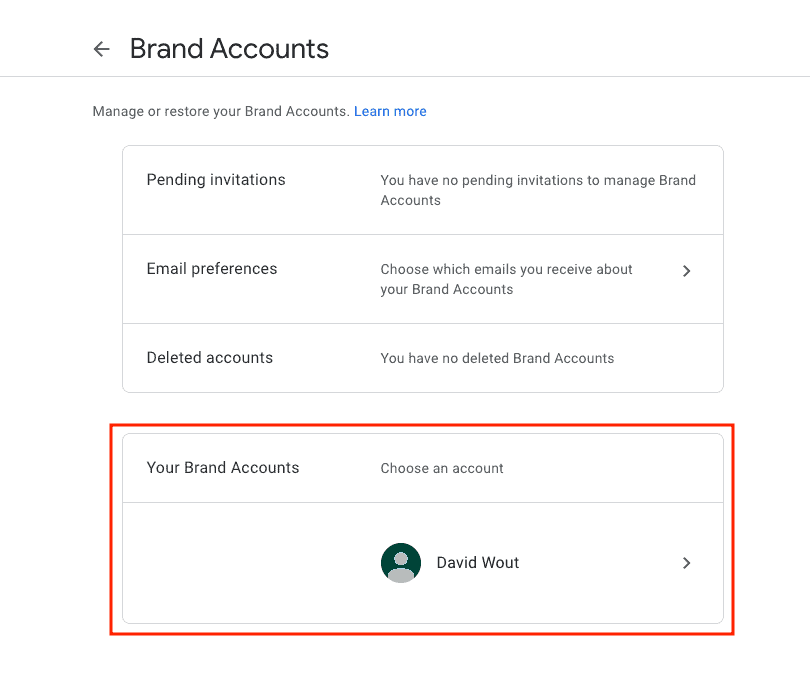
If your YouTube channel is not a brand account, then you need to move it to a brand account.
To do this, first, you need to make a new channel on the same Google account.
You can do this by selecting your profile picture in the top right on YouTube.com. Then select “Switch account”, followed by “View all channels”.
On the next screen select “Create a channel” and then add any name. This is just a placeholder channel and your existing channel will replace it, so use a similar, but different name. Then check the box that says you understand what you’re doing and click create.
Now you have a brand account. The next step is to transfer your existing channel to your brand account.
The first thing you need to do is make sure you are signed in to the YouTube channel you want to move, you can accidentally delete the wrong channel if you have multiple brand accounts associated with your Google account.
To move your YouTube channel to a brand account, click on your profile picture in the top right corner of YouTube.com and then select “Settings”. Make sure you are not in the YouTube studio, you can only access these settings from YouTube.com.
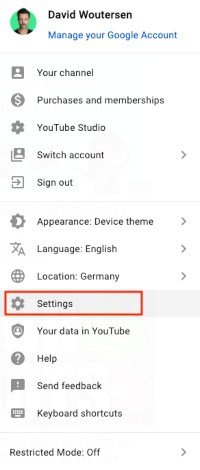
In the menu on the left, select “Advanced Settings”. On the next screen select, “Move channel to a brand account”.
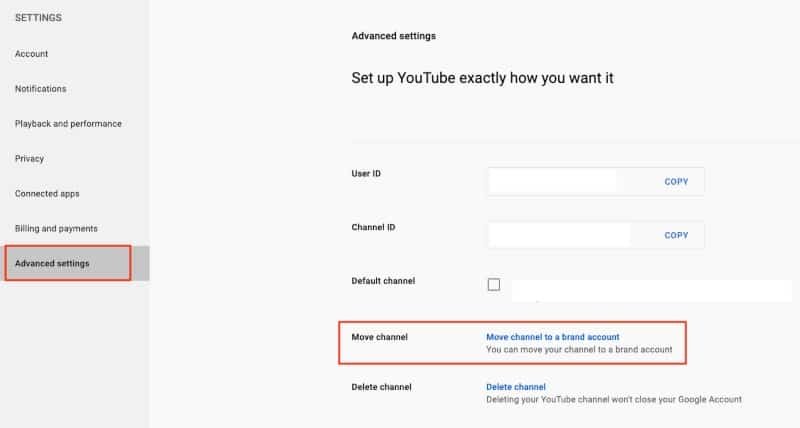
Next, you can choose the placeholder channel you just created and select “Replace”.
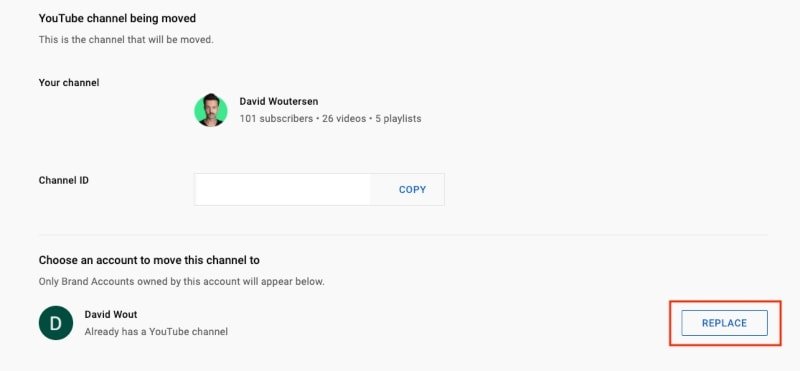
You’ll then be prompted to delete the placeholder channel as it’s already connected to a YouTube channel. You can make sure you’re deleting the right channel as this should show there are no subscribers, videos, or playlists on the channel. Select “Delete Channel”.
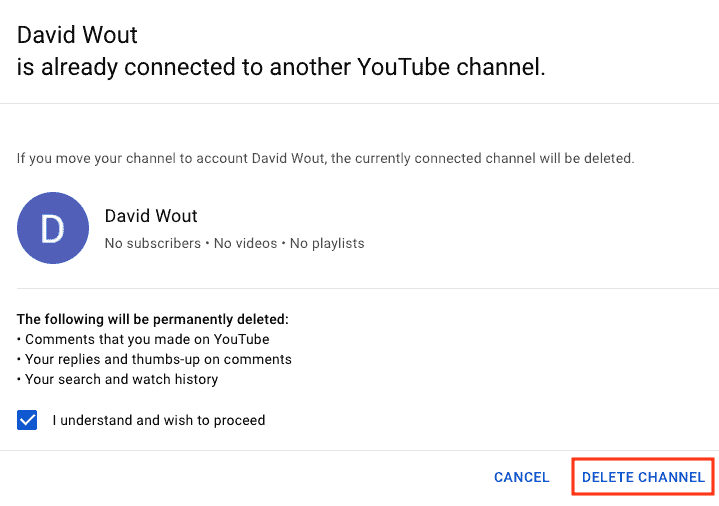
You will then be shown the channel you wish to move with some information about the move. Your comments for example will not be moved, and your custom channel URL will also not be moved (you can claim your custom channel URL again by following this guide), but your channel URL will not change. Click on “Move channel” when satisfied.
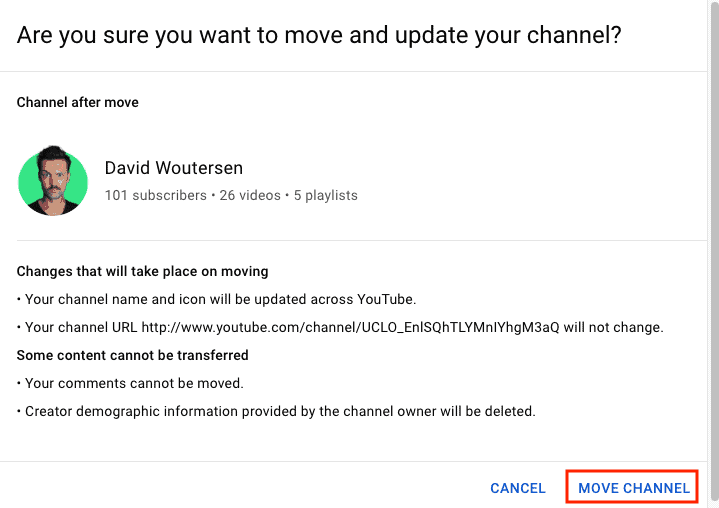
It can take 10 minutes for all changes to take effect, but now your YouTube channel should be transferred to a brand account. When you select the profile picture, you should see your profile picture twice.
The top one is your account that is not associated with a brand account, it should show “No channel” beneath the name. And beneath that you should see your YouTube channel with all of your subscribers, this is your newly moved brand account.
Now that you have a brand account this is how to transfer the ownership of your YouTube channel.
First, you need to open the YouTube studio.
Then in the menu on the left, select “Settings”.
Click on “Permissions” on the left and then “Manage Permissions”.
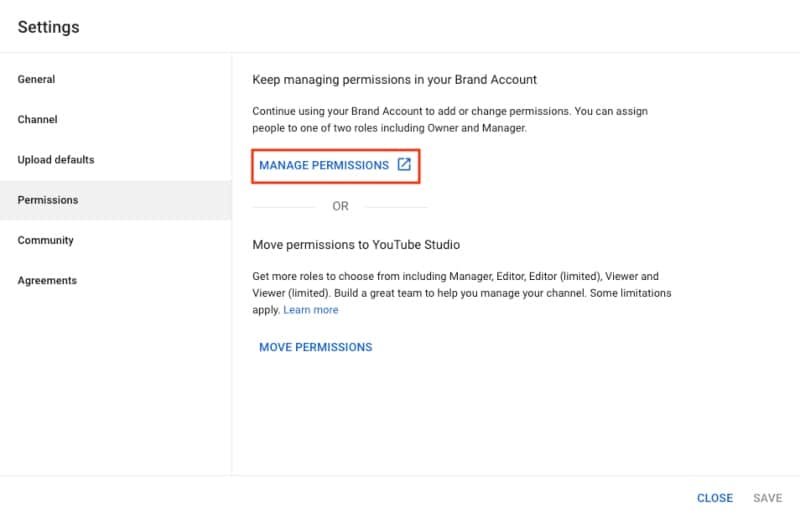
If you do not see this option, you either have not moved your channel to a brand account, or you have opted for “Studio permissions”. To continue, you first need to opt your channel out of “Studio permissions”.
To opt out, all you have to do is select “Opt out of permissions in YouTube Studio”. If you do not see this opt-out option, then you have not yet moved your channel to a brand account.
Click “Manage Permissions” again and you will need to then log into your Google account and verify your identity.
Once verified, you can select the + icon in the top right corner to add the new channel owner. A box will open and then you can type in their email address (preferably associated with a Google account, otherwise they will have to set one up).
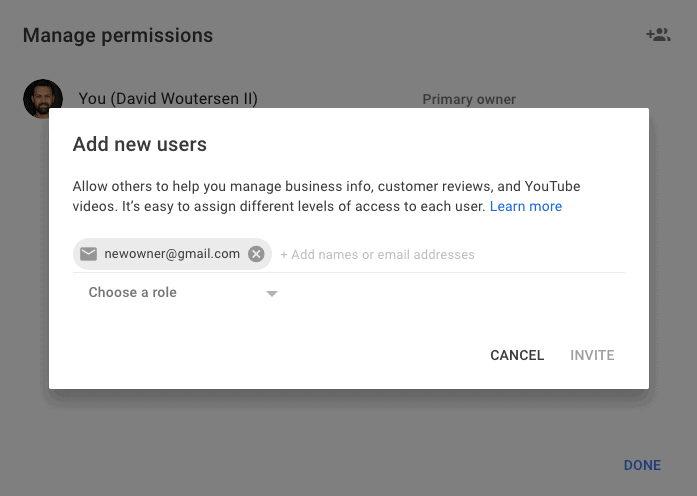
By the “Choose a role” dropdown, you can then select “Owner”.
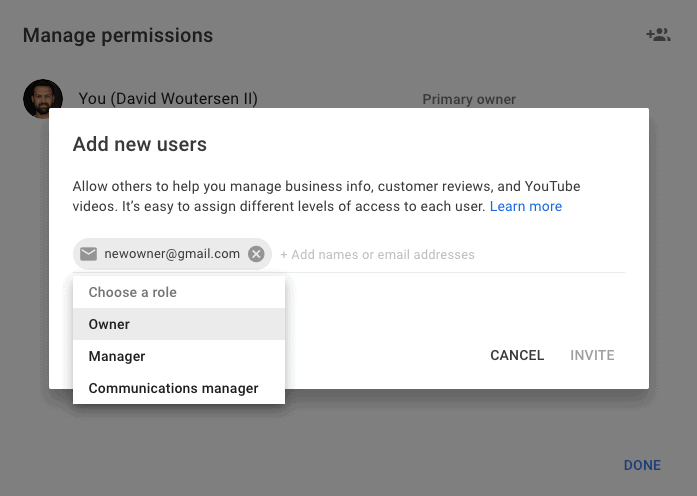
Then select “Invite”.
Now the new owner needs to accept the invitation and after 7 days they can change themselves to the primary owner and remove you from the YouTube channel (or change your status to a manager if you need to still help them with the channel).
P.s. Only add the buyer to the account as an owner once they have transferred the money to the Escrow account and you have received confirmation of this from Escrow or your marketplace.
Should you sell your YouTube channel?
Now before you go and sell your YouTube channel, should you?
There are a few times when it makes a lot of sense to walk away and move on. If you are lacking time to create new videos, have lost interest in the niche, or want to cash out and move on to other projects (or take the money to invest in other projects) it can be a good time to sell your YouTube channel.
If, however, the channel revolves largely around yourself, then you probably won’t be able to get as much for it and it may be better to hold onto it.
Instead of selling, you may want to consider different ways of monetizing your channel and testing content that doesn’t have a large focus on you as the channel owner (in preparation for selling the channel in the future).
Final thoughts on selling a YouTube channel
You can earn quite a large amount of money if you sell your YouTube channel, around 36 times the monthly revenue. And there are many good reasons you may want to sell your YouTube channel.
If you find yourself in the boat where you want to sell, it’s almost always better to sell when your channel is on a growth curve or has a stable revenue.
Make sure you get everything in order before you list it for sale, and if your channel isn’t quite in its best shape to sell, putting in some effort to get it in shape can help you extract the maximum amount from the sale.
The process of transferring ownership is much easier than transferring ownership for a website, for example, but you should still be cautious when selling your YouTube channel to avoid any scammers.
This article has hopefully helped you better understand how and why you may want to sell your YouTube channel, how much you should expect to receive, and how to actually go about selling your channel.
